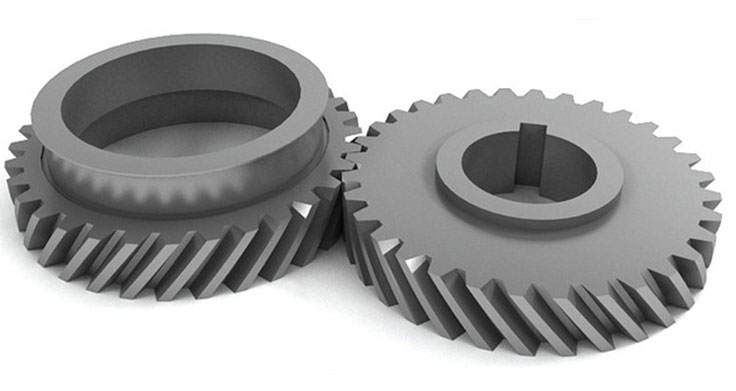
Helical gears are widely used in heavy machinery due to their ability to handle high torque and power transfer requirements. They play a crucial role in various heavy-duty applications where reliable and efficient power transmission is essential. Here are some key aspects of how helical gears tackle torque and power transfer in heavy machinery:
1. High Torque Capacity:
- Helical gears have higher torque capacity compared to other gear types like spur gears. The helix angle of helical gears allows for multiple gear teeth to be in contact simultaneously, distributing the load over a broader tooth surface. This design feature enables helical gears to handle heavy torque loads typically encountered in heavy machinery applications.
2. Smooth and Efficient Power Transmission:
- The helical tooth profile of these gears provides smooth and continuous tooth engagement, resulting in reduced noise and vibration during gear operation. This smooth motion contributes to efficient power transmission and reduces wear on gear teeth and other components, enhancing the overall reliability and longevity of the machinery.
3. Versatility in Gear Ratios:
- Helical gears can achieve a wide range of gear ratios, allowing heavy machinery to operate at different speeds and handle varying loads. The adaptability of helical gears makes them suitable for various heavy machinery applications, including mining equipment, construction machinery, and large industrial systems.
4. Load Distribution:
- The helix angle of helical gears ensures uniform load distribution across the gear teeth, minimizing localized stress and wear. This load-sharing characteristic is crucial for heavy machinery applications that experience high cyclic and shock loads.
5. Parallel Shaft Configurations:
- Helical gears are commonly used in parallel shaft configurations, where the gear shafts are parallel to each other. This setup is often seen in heavy machinery applications, such as crushers, conveyors, and rotary kilns, where multiple stages of helical gears are used to achieve the required torque and speed ratios.
6. High Efficiency:
- Helical gears exhibit higher efficiency compared to bevel gears or worm gears, which is important in heavy machinery where energy efficiency is a key consideration. Their ability to transmit power with minimal energy losses contributes to overall machine efficiency.
7. Customization for Specific Applications:
- Helical gears can be customized to meet the specific requirements of different heavy machinery applications. Engineers can optimize gear design parameters, such as helix angles, tooth profiles, and materials, to ensure optimal performance and reliability.
8. Durable Materials and Heat Treatment:
- In heavy machinery applications, helical gears are often manufactured using high-strength materials, such as alloy steels, and undergo heat treatment to enhance their hardness and wear resistance. These measures ensure that the gears can withstand the demanding conditions of heavy-duty operations.
9. Reducing Gear Noise:
- While helical gears generally produce less noise compared to spur gears, mitigating gear noise remains important in heavy machinery. Design improvements, such as tooth profile modifications and noise-reducing coatings, help minimize gear noise and contribute to operator comfort and safety.
In summary, helical gears are well-suited for heavy machinery applications due to their high torque capacity, smooth power transmission, versatility in gear ratios, and ability to handle heavy loads. Their design flexibility, along with advancements in materials and manufacturing techniques, continues to make helical gears a reliable and efficient choice for tackling torque and power transfer in a wide range of heavy machinery applications.
